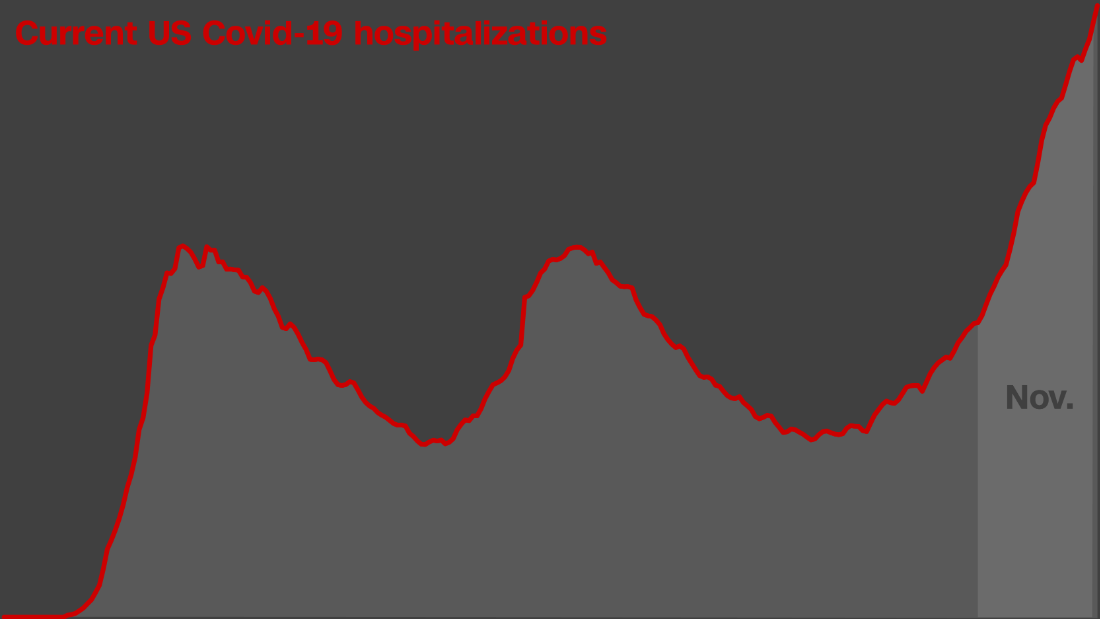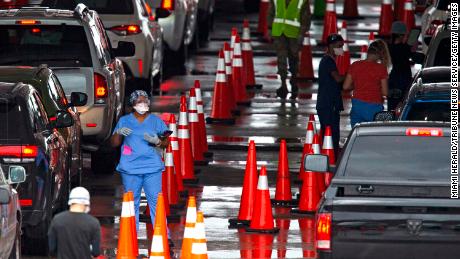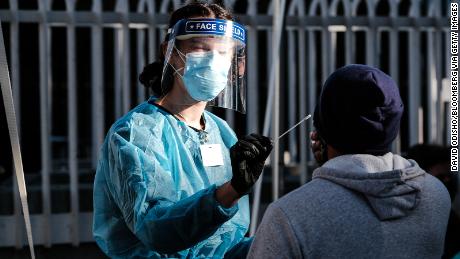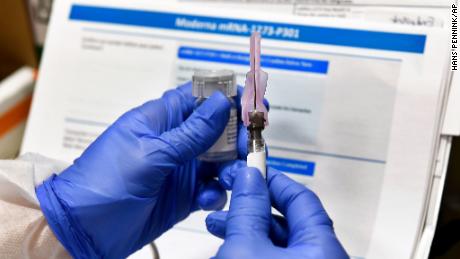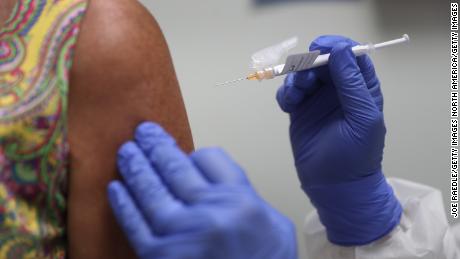America reported its second highest day of Covid deaths Tuesday as more than 98,600 virus patients were in US hospitals
The country’s daily average of Covid-19 deaths across a week is 1,531 — above its summer high of around 1,130 but lower than the US pandemic peak above 2,240 in late April.
States push back against climbing records
Tuesday was a record-breaking day for coronavirus devastation in many states, and local leaders are pushing back with new measures to combat the virus.
Oregon reported its highest number of deaths reported in a day. Texas set its record for coronavirus cases reported in one day, at more than 15,000. And Mississippi has more Covid-19 patients in hospitals than ever before, at more than 1,000, state officials said.
“This is a time when the virus is extremely present,” Gov. Tate Reeves told reporters. “The risk is higher of catching it because of the number of cases that we’re reporting, there is more virus in the communities.”
Kentucky Gov. Andy Beshear called Tuesday the state’s “worst day ever” for the coronavirus by “virtually every measure.”
“It is the deadliest day that we have had,” Beshear said. “If we don’t all do our part, if we try to be the exception, then slowing down this thing won’t work, and we will lose a lot more Kentuckians we love and care about.”
California’s Los Angeles County also had its “worst day” yet when it came to cases and hospitalizations, according to county Health Director Dr. Barbara Ferrer.
“However, it will likely not remain the worst day of the pandemic in Los Angeles County. That will be tomorrow, and the next day and the next as cases, hospitalizations and deaths increase,” she said.
A modified stay-at-home order went into effect in the county Monday, prohibiting outdoor dining and gathering with people outside a single household.
Nursing home cases reach highest peak since spring
Nursing homes, which were hit hard early in the pandemic, reported their highest week of new coronavirus cases since the spring, the American Health Care Association and National Center for Assisted Living (AHCA/NCAL) said in a report published Tuesday.
“Our worst fears have come true as Covid runs rampant among the general population, and long-term care facilities are powerless to fully prevent it from entering due to its asymptomatic and pre-symptomatic spread,” said Mark Parkinson, president and CEO of AHCA/NCAL, in a statement.
Between mid-September and the week of November 15, there was a 177% rise in new weekly nursing home cases nationwide. The rise in cases has been accompanied by a rise in coronavirus deaths in nursing homes.
Nursing homes in the Midwest were particularly hard hit, with a more than 400% increase in weekly cases since mid-September.
The increase is correlated with the nationwide surge in cases, and health experts say increased spread in the community is a good indicator that cases will surge in nursing homes.
“Given the fact that our elderly population is the most vulnerable and the rising level of Covid across the US shows no signs of stopping, it is paramount that the Centers for Disease Control and Prevention (CDC) provide the highest priority for the vaccine distribution to long-term care residents and staff,” Parkinson said.
Health care workers and long-term care patients will be vaccinated first
A widespread distribution of vaccines may still be months away, but the US is preparing to ship out the first wave of inoculations — and health care workers and long-term care patients are at the top of the list to receive them.
Federal officials expect to have 40 million doses of the coronavirus vaccine available by the end of December, but those doses will not all be available at once, CDC vaccine advisers were told Tuesday.
The CDC’s Dr. Sara Oliver told the Advisory Committee on Immunization Practices that the agency expects between 5 million and 10 million doses to become available each week for the first few months as vaccine makers ramp up manufacturing.
CNN’s Jason Hanna, Raja Razek, Jennifer Henderson, Devon M. Sayers, Rebekah Riess, Lauren Mascarenhas, Sarah Moon and Maggie Fox contributed to this report.
![]()


